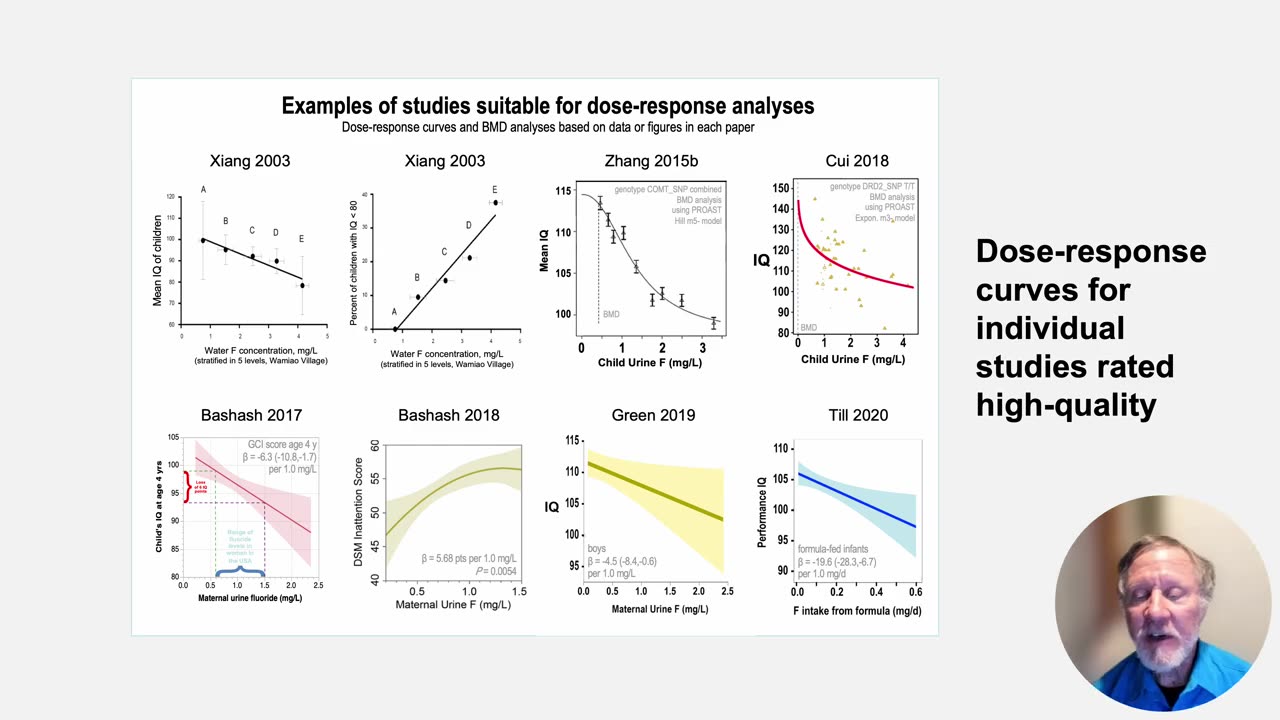Premium Only Content

Review Of Evidence Presented In The Fluoride Lawsuit On The Risk Of Fluoride Neurotoxicity
One month after this video presentation was given at the annual scientific conference of the International Society for Environmental Epidemiology (ISEE), the court issued its decision.
The court essentially agreed with the evidence and interpretations made in this video and ruled in favor of the citizen groups and against the EPA. The court issued a detailed 80-page decision that concluded, in part:
“The Court finds that fluoridation of water at 0.7 milligrams per liter (“mg/L”) – the level presently considered “optimal” in the United States – poses an unreasonable risk of reduced IQ in children…the Court finds there is an unreasonable risk of such injury, a risk sufficient to require the EPA to engage with a regulatory response.”
“In all, there is substantial and scientifically credible evidence establishing that fluoride poses a risk to human health; it is associated with a reduction in the IQ of children and is hazardous at dosages that are far too close to fluoride levels in the drinking water of the United States…Reduced IQ poses serious harm. Studies have linked IQ decrements of even one or two points to, e.g., reduced educational attainment, employment status, productivity, and earned wages.”
Additional details about the court's ruling, including the full text of the ruling, are available here:
https://fluoridealert.org/content/fed...
The video presentation describes the key scientific evidence and issues in the lawsuit, and the court agreed with the citizen group Plaintiffs on all of the key evidence, issues, and interpretations of the TSCA law. Additional quotes from the decision highlight some of these points that persuaded the court that fluoridation at a concentration of 0.7 milligram per liter of water poses an unacceptably high risk of reduced IQ in children and the EPA must develop regulations to eliminate that risk:
"The pooled benchmark dose analysis concluded that a 1-point drop in IQ of a child is to be expected for each 0.28 mg/L of fluoride in a pregnant mother’s urine. This is highly concerning, because maternal urinary fluoride levels for pregnant mothers in the United States range from 0.8 mg/L at the median and 1.89 mg/L depending upon the degree of exposure. Not only is there an insufficient margin between the hazard level and these exposure levels, for many, the exposure levels exceed the hazard level of 0.28 mg/L." (p. 5)
"There is significant certainty in the data set regarding the association between fluoride and reduced IQ. Namely, there is a robust body of evidence finding a statistically significant adverse association between fluoride and IQ. A large majority of the 72 epidemiological studies assessed by the NTP Monograph observed this relationship including all but one of the 19 high-quality studies ... and literature published after the NTP Monograph cutoff date observed the same relationship ... – and countervailing evidence, for various reasons described previously, are of little impact on this repeated, and consistently observed association between fluoride and reduced IQ .... Moreover, complete consistency amongst studies is not expected. ... Notably, notwithstanding inherent difficulties in observing this association at lower exposure levels, studies assessing such levels still observed a statistically significant relationship between fluoride and reduced IQ." (p. 78)
Originally uploaded on Oct 23, 2024
-
 1:13:58
1:13:58
The Charlie Kirk Show
2 hours agoTHOUGHTCRIME Ep. 73 — Tattoo Vibe Shift? RFK's Day 1 Agenda? Subway Speakerphone Ban?
59.4K16 -
 26:10
26:10
Mrgunsngear
4 hours ago $0.17 earnedRomanian RPK Review: The Warsaw Pact's M249 SAW
1.87K2 -
 1:52:40
1:52:40
StaleSavage
2 hours agoCrows Nest Gaming Community
34.7K1 -
 LIVE
LIVE
Man in America
7 hours ago🚨 CCP’s SECRET WAR on America—Military Insider Sounds the ALARM! w/ Matthew Newgent
635 watching -
 LIVE
LIVE
SpartakusLIVE
4 hours ago#1 HACKER gets UNBANNED || The MASSES Rejoice, The Accusers TRIGGERED
549 watching -
 LIVE
LIVE
Flyover Conservatives
21 hours agoThe #1 Mistake Singles Make That Keeps Them Alone Forever - Jackie Dorman | FOC Show
721 watching -
 1:06:32
1:06:32
PMG
20 hours ago"372 Duodecillion Possibilities: COVID Complexities & Long COVID Remedies w/ Dr. Bryan Ardis"
6983 -
 1:06:41
1:06:41
Donald Trump Jr.
8 hours agoDOGE Keeps Digging as Dems Keep Deceiving, Live with Lawyer Paul Moore & Entrepreneur Barry Habib | Triggered Ep. 216
106K71 -
 1:07:37
1:07:37
Slightly Offensive
2 hours ago $2.55 earnedTrump to FINALLY end UKRAINE WAR?! Putin AGREES | Nightly Offensive
32.5K5 -
 59:28
59:28
The StoneZONE with Roger Stone
3 hours agoTrump’s Divine Presidency: Pastor Randy Coggins II on Faith, Family, Freedom | The StoneZONE
30.3K2